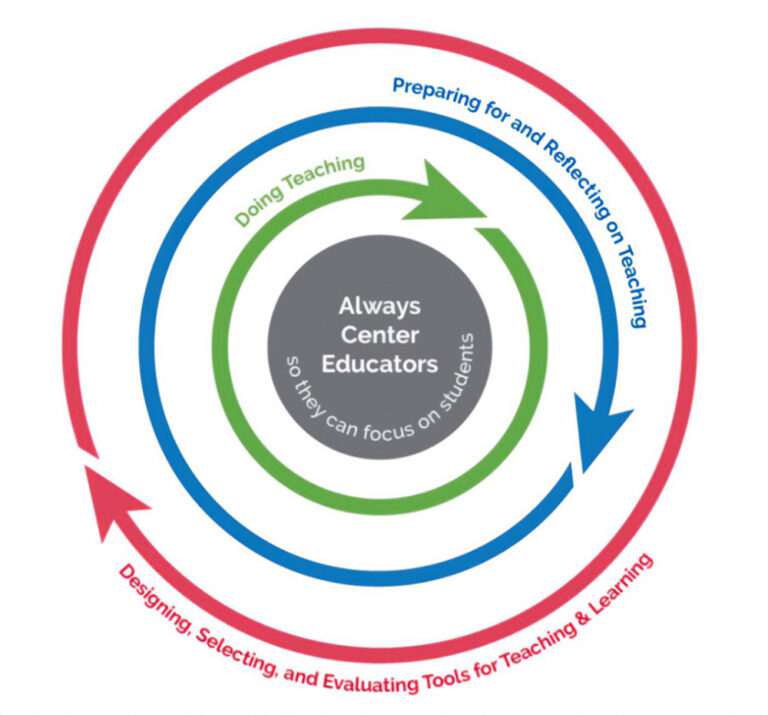
STEAMy ideas for your course
A recent trend in higher education involves integrating arts, humanities, and STEM (Science, Technology, Engineering, Mathematics) curriculum now known as STEAM. Large research studies (1) show that integration can broaden the student experience within highly specialized fields, heighten student engagement, foster creativity, and build on desired skills like communication, teamwork, and critical thinking to better prepare students for the workforce (2). Even if your course is not part of an integrated program, enhancing your course with interdisciplinary components is one step that can be especially beneficial for building engagement and meaning through creative inquiry and construction. Here are a few ideas for ways to do this.
Invite your students to demonstrate their understanding of a topic through creation of an artifact that goes beyond the essay or term paper and melds creative presentation with research. Presentations such as a skit, dance, sculpture, poster, animation, infographic, or painting that explains research or a concept can be fun for sharing and potentially an opportunity to engage peer review. These are projects that mix methods in order to create, innovate, and advance knowledge.
For class competencies involving writing, find a new topic outside your discipline to help forge connections. Instead of a standard essay, write a faux article for a specific popular magazine, for example, ‘Astrophysics according to Shakespeare’ or ‘How music affects learning’. How might performance be part of the assessment? Have students derive their essay into a poem read aloud and recorded or performed as a song. Students could transform their essay into a story with characters in a graphic presentation, like a graphic novella or comic book, to share with peers.
Projects that address real-world problems often require input from many angles and can help students build empathy and civic ownership. Students could investigate local air quality issues and create an artifact based on their research that outlines the issue from chemistry to health to politics. Perhaps they offer a solution or a proposal for a work of public art that would help visually connect the community to the issue.
When designing true cross-disciplinary assessments, learning objectives for all elements should be taken into account. This can be difficult to do if the product contains a method outside your expertise. However, this is also an opportunity to work with other faculty across our university. For example, an art professor could give a quick lesson in an ecology course where students are asked to provide a creative diagram of an ecosystem. The diagram would then be assessed for the basic elements of art and design in addition to understanding of ecosystem functions. Alternately, a creative thinking value rubric could be utilized.
Giving students who are reluctant to participate in creative activities a choice is always good practice. One professor at Johns Hopkins University gives her students the choice of “three types of products: research papers (experimental and/or theoretical in nature), short films (documentary or fiction styles), and popular science articles (2).
“…engaging in creative problem solving and discovery not only within a single discipline, but across several disciplines in the classroom, engages crucial cognitive processes important for successful learning such as emotion (e.g. positive engagement) and memory (e.g. long-term),” (3).
Here at UAF CTL, we would love to help you brainstorm ideas for integrating assessments or courses between disciplines, or hear about how you are already doing this!
References
- National Academies of Sciences, Engineering, and Medicine. (2018). The integration of the humanities and arts with sciences, engineering, and medicine in higher education: Branches from the same tree. Washington, DC: The National Academies Press.
- Garcia, A. (2019, April 1). Improving college curriculum through STEM, humanities integration. FIU News. Retrieved from https://news.fiu.edu/2019/improving-college-curriculum-through-stem-humanities-integration
- Lopez-Gonzalez, M. (2017). STEAM is hotter than STEM: The why and what of my teaching paradigm in higher education. SciArt . Retrieved from https://www.sciartmagazine.com/steam-is-hotter-than-stem-the-why-and-what-of-my-teaching-paradigm-in-higher-education.html
Further Reading
- Art Across the Disciplines: How the Integration of Fine Arts Across the Curriculum is Influencing and Changing STEM Pedagogy
- Cross-Curricular Connections in Instruction
- Convergence: Facilitating Transdisciplinary Integration of Life Sciences, Physical Sciences, Engineering, and Beyond
- Getting Ready for Careers in STEAM
- Branches of the Same Tree
- The World Needs Students With Interdisciplinary Education
- Hacking STEM Lessons & Hands-On Activities



